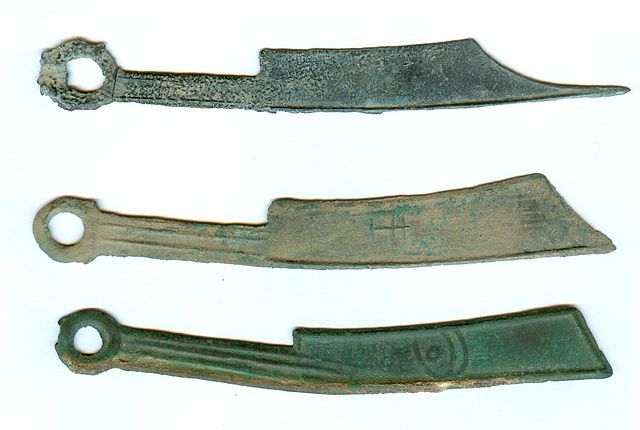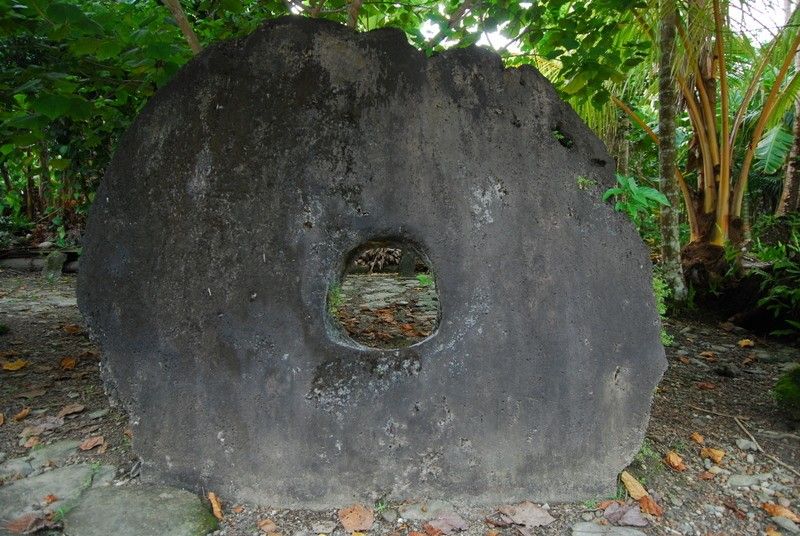
Article posted by
Money makes the world go around is a saying you hear regularly. But would you take a large stone or a block of salt instead of your pay cheque? There are all kinds of strange currencies that have existed throughout history, which are very different from what we use today. Here we take a look at some unusual forms of ancient currency that might make you more grateful for the ease of modern day banking.
Knife money
Using knives for money seems unthinkable in the Western world, but this bizarre form of currency was used throughout China around 600 BCE, at the time of the Zhou dynasty. The knives were inscribed with numbers or a single word to mark their value. It’s not known for certain how knife currency was first introduced in China. But one of the stories say that a prince originally allowed his troops to use knives as money and eventually, this became an accepted form of currency.

Dolphin teeth
For hundreds of years on the Solomon Islands, dolphin teeth have been used as currency. The islands have a long history of hunting dolphins and the age-old practice came to a halt around the middle of the nineteenth century. However, as a result of the devaluation of the country’s dollar, some parts of the island have reverted back to the traditional use of dolphins. In modern times, their teeth are sold for jewellery and cash.
Salt
Salt has been integral to human life for thousands of years, as it’s an essential element in our diet, as well as in animals and many plants. Salt’s ability to preserve food made it a precious and highly valued commodity during the Roman Empire and throughout the Middle Ages. It was used as a method of trade and currency and historically, people would lick the salt block to make sure it was real and break pieces off to make change. Interestingly, the word salary stems from the Latin term ‘salarium’, which refers to salt money.
Squirrel pelts
Back in the Middle Ages, squirrel fur was used as common form of currency in Russia. Snouts, claws and ears were even used as change. Despite the harshness of this type of currency, it may have helped the Russians steer clear of the Plague. Russia didn’t get hit as hard during the plague compared to other countries, which may have been because they reduced the number of squirrels bearing the disease.
Wooden money
It’s hard to imagine carrying around wooden bills in your wallet, but this was a form of currency in Germany after WWI, during the hyperinflation. As most of you will know, the German economy was in a bit of a mess following the war. So, local townships went on a money printing-spree and took to printing on anything from wood, foil, silk and leather. This type of money was known as the Notegeld and it was used until the hyperinflation ended in 1923.
Rai stones
At one time, on the island of Yap in Micronesia, rai stones were at the centre of the Yapese’s trading network. People used these huge stones to make transactions and their value is based on size, craftsmanship and history. The Yapese quarried limestone rocks from the nearby Palau island, and then shaped the stone into large discs with holes in the centre. It is believed they started crafting the stones in 500 AD. Eventually, their value diminished when the Europeans took over. Although today the US dollar is the standard form of currency in Yap, rai stones are still used occasionally for important and traditional transactions, including marriage payments and political deals. Their image is a national emblem for the country.

These strange forms of currency provide an insight into ancient cultures, rich with unique and diverse customs.
We’re here if you need help defining a role or brief, specialist insight to help shape your ideas or expert help with your recruitment process. Just get in touch to arrange a conversation with one of the team or if you’re ready for us to find the perfect person for you, send us your brief.
If you’re looking for your ideal job send your CV to us to get started or search for the latest job vacancies and we’ll get the ball rolling.